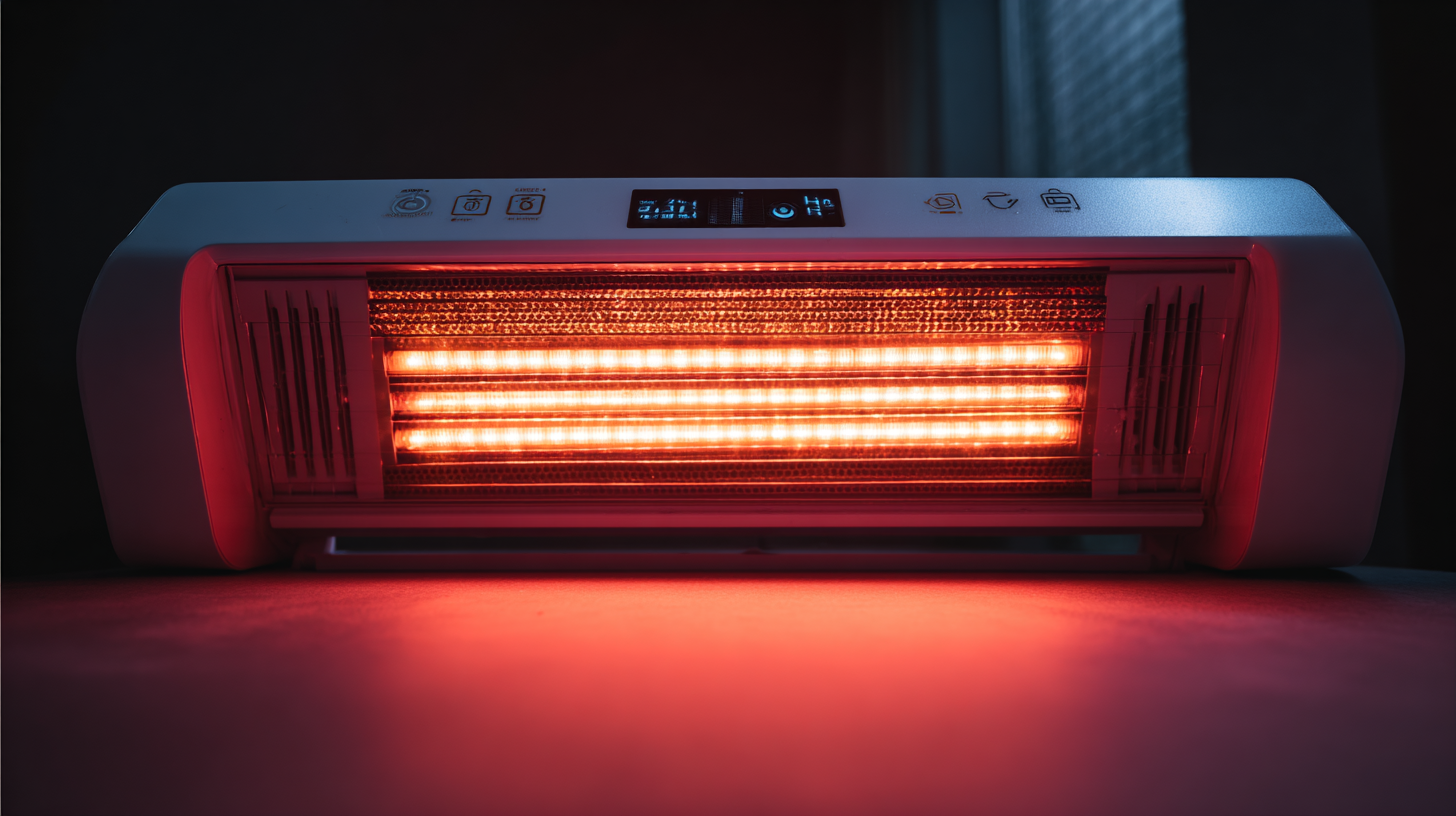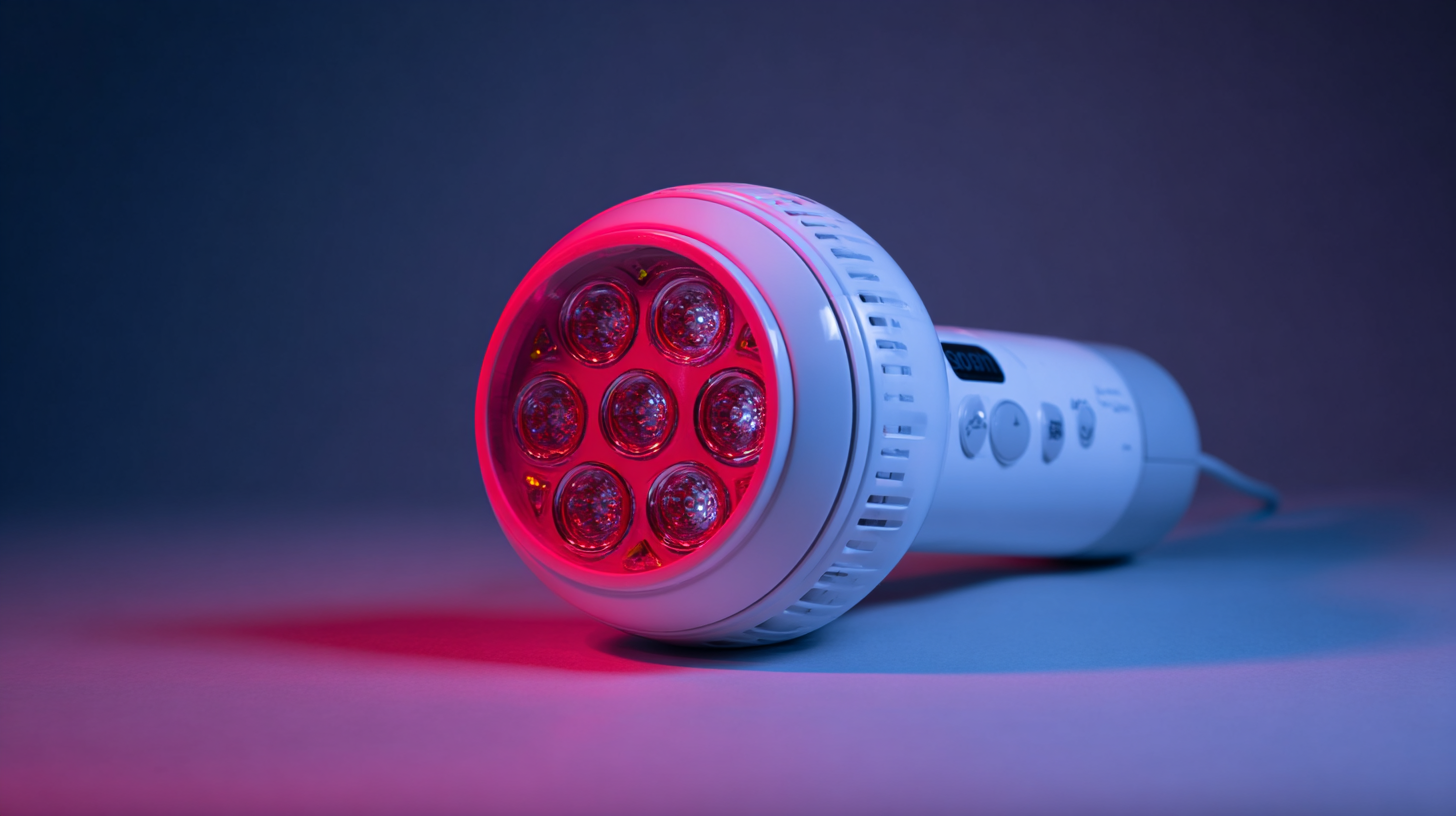Unlocking the Benefits: The Ultimate Guide to Choosing the Best Infrared Light Therapy for Your Needs
In recent years, Infrared Light Therapy has gained significant recognition for its potential health benefits, ranging from pain relief to enhanced skin rejuvenation. As the market offers a plethora of options, choosing the right infrared light therapy device can be overwhelming. This ultimate guide aims to simplify the selection process by providing detailed technical specifications, insightful numerical comparisons, and a ranking of the top types available today. By unlocking the numerous benefits of infrared light therapy, you can make informed decisions tailored to your individual needs, ensuring optimal results. Whether you are seeking relief from chronic pain, improved athletic recovery, or skin health enhancement, understanding the nuances of these devices will empower you to harness the true power of infrared light therapy effectively.
Understanding Infrared Light Therapy: A Comprehensive Overview
Infrared light therapy (ILT) has gained attention in recent years for its potential benefits in pain relief, wound healing, and skin rejuvenation. According to a report by the National Institutes of Health, studies indicate that infrared light can penetrate deep into the skin, promoting circulation and cellular repair. This non-invasive therapy targets the body's pain receptors, making it an effective option for conditions like arthritis and muscle soreness. Furthermore, a meta-analysis in the Journal of Photomedicine and Laser Surgery found that ILT significantly reduces inflammation and accelerates recovery in soft tissue injuries.
When choosing the best infrared light therapy device, consider your specific needs. For targeted pain relief, a handheld device may be ideal, while larger panels can cover broader areas for skin rejuvenation. Always look for devices that emit wavelengths between 600-1000 nm, as research shows these ranges provide optimal therapeutic effects.
Tip: Regular sessions, typically for 20-30 minutes several times a week, are recommended to experience the full benefits of ILT.
It's also important to consult a healthcare professional before starting any new therapy, especially if you have pre-existing health concerns. Their insights can guide you toward the most suitable device and treatment plan tailored to your individual requirements.
Unlocking the Benefits: The Ultimate Guide to Choosing the Best Infrared Light Therapy for Your Needs
| Feature |
Description |
Benefits |
Best For |
| Wavelength |
Typically ranges from 600 to 1000 nm |
Deep tissue penetration, improved circulation |
Chronic pain relief |
| Type of Therapy |
Near, Mid, and Far-infrared |
Different therapeutic effects based on depth of penetration |
Skin conditions, muscle recovery |
| Application Method |
Handheld devices, panels, or beds |
Versatile usage for targeted or full-body treatment |
Convenient home use, professional therapeutic settings |
| Session Duration |
Typically 10-30 minutes |
Improved healing time with consistent use |
Athletic recovery, chronic conditions |
| Safety Features |
Cooling systems, auto shut-off |
Prevents overheating and ensures user safety |
Sensitive skin, prolonged sessions |
Different Types of Infrared Light Devices: Pros and Cons
When exploring infrared light therapy, it's essential to understand the different types of devices available, each with its unique benefits and drawbacks. Two common types are near-infrared (NIR) and far-infrared (FIR) devices. NIR devices typically penetrate deeper into the skin, promoting cellular repair and regeneration. A 2020 study published in the Journal of Clinical Laser Medicine and Surgery found that NIR therapy significantly improved wound healing by increasing collagen synthesis and reducing inflammation. However, NIR devices can be more expensive and may require a longer treatment time to see results.
On the other hand, FIR devices operate at a lower wavelength and primarily provide thermal benefits, enhancing circulation and detoxification. According to a report from the National Institute of Health, FIR saunas have been linked to benefits such as improved cardiovascular health and pain relief. The drawbacks, however, include potentially limited penetration depth, which may not be as effective for deeper tissue issues. Ultimately, the choice between NIR and FIR depends on individual needs and specific health concerns, making it crucial to weigh these pros and cons before making a decision.
Key Features to Consider When Choosing an Infrared Light Device
When selecting an infrared light therapy device, it's essential to consider several key features that can significantly impact its effectiveness for your specific needs. One of the most critical factors is the wavelength of the infrared light. Devices that emit light in the range of 600 to 1000 nanometers are typically most beneficial, as they penetrate the skin effectively and promote better circulation, pain relief, and tissue healing. Additionally, pay attention to whether the device is designed for near-infrared (NIR) or far-infrared (FIR) therapy, as each serves different purposes and might be more suitable for particular conditions.
Another important aspect to consider is the power output of the device, often measured in milliwatts per centimeter squared (mW/cm²). Higher power output can lead to more effective treatment, but it should be balanced with safety features to prevent overheating or skin damage. Furthermore, look for devices that offer adjustable intensity levels and treatment timers, allowing you to customize the therapy according to personal comfort and specific therapeutic needs. Finally, evaluating the build quality and portability of the device will enhance your user experience and ensure that you can easily incorporate infrared light therapy into your wellness routine.

Targeted Applications: How to Match Devices to Your Needs
When considering infrared light therapy devices, matching the right technology to your specific health needs is crucial for maximizing benefits. According to a 2022 report by Research and Markets, the global infrared therapy market is projected to reach $1.35 billion by 2025, highlighting the growing interest in this treatment modality. Different wavelengths serve various therapeutic purposes; for instance, near-infrared light (NIR) typically penetrates deeper, making it ideal for musculoskeletal pain relief, while mid and far-infrared lights target skin rejuvenation and circulation enhancement.

Moreover, targeted applications can also involve specific device features tailored to your health objectives. A 2021 study published in the Journal of Photomedicine concluded that consistent use of infrared therapy can significantly improve skin texture and reduce inflammation in acne-prone individuals, suggesting skincare devices with focused wavelengths could provide a double-win. Thus, consumers should evaluate their health goals—be it pain management, improved recovery times, or revitalized skin—to select the most appropriate infrared therapy device, ensuring they achieve optimal results and enhance their overall well-being.
Safety and Guidelines: Best Practices for Infrared Light Therapy Usage
When considering the implementation of infrared light therapy, safety and adherence to guidelines play a crucial role in maximizing its benefits. According to a report by the National Institutes of Health, infrared therapy can promote healing by stimulating blood circulation and enhancing cellular repair, but improper usage may lead to adverse effects. It's essential to select devices that have been clinically tested and certified for safety. Users should ensure their chosen device emits the appropriate wavelengths, typically between 600 to 1000 nanometers, as research shows this range effectively penetrates tissue without causing harm.
**Tips:** Always start with shorter sessions—approximately 10 to 15 minutes—allowing your body to gradually adapt to the treatment. Additionally, maintaining a safe distance between the light source and the skin is vital; a range of 6 to 12 inches is generally recommended to avoid overheating the area. Make sure to consult with a healthcare professional before beginning any new treatment, as individuals with certain conditions, such as skin sensitivities or solar retinopathy, may require tailored advice.
It's important to establish a consistent routine for infrared therapy, as studies suggest that regular treatment can yield significant results in pain reduction and tissue healing. Creating a schedule that allows for at least three sessions per week can optimize benefits. Always monitor your skin's response after treatments and adjust your regimen accordingly. Adopting these safety guidelines will help you unlock the full potential of infrared light therapy while mitigating any risks involved.
Infrared Light Therapy: Usage and Benefits







